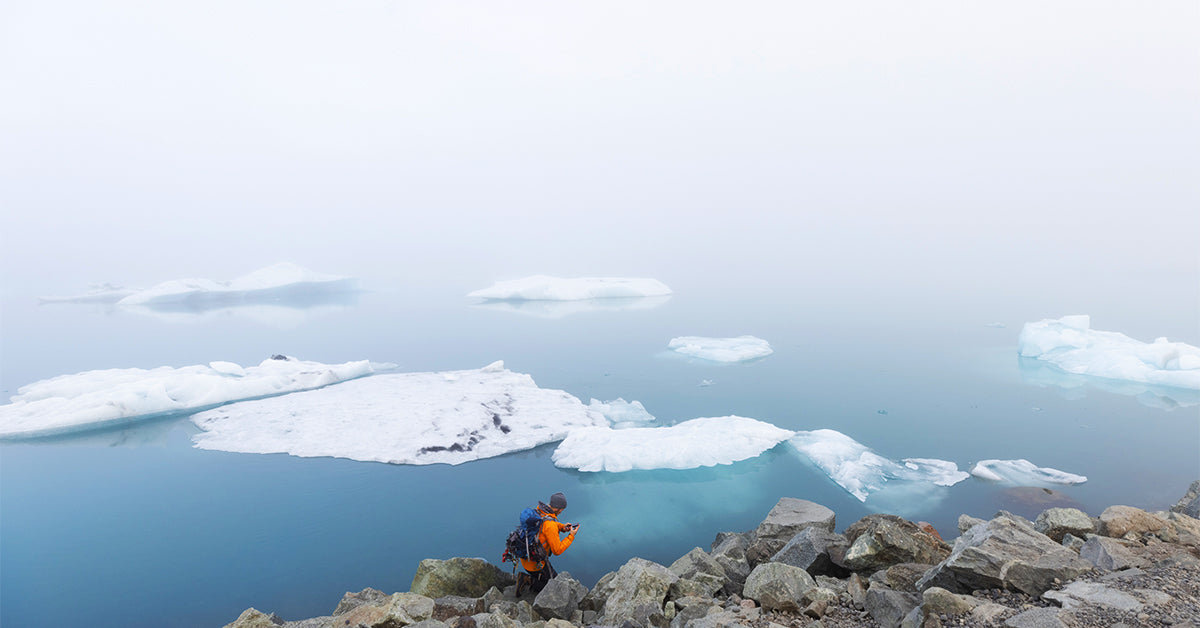Tech News
Tech News
Enhancing Industrial Inspections: The Vital Role of Thermal Cameras
Introduction:
Thermal cameras, particularly the advanced AGM G2 Guardian model, are playing an increasingly critical role in industrial inspections. With their ability to detect and visualize temperature variations, these cutting-edge devices are helping businesses identify potential issues and prevent costly breakdowns. In this article, we will explore how thermal cameras are revolutionizing industrial inspections, specifically in the areas of electrical, mechanical, and building inspections.
Preventive Maintenance and Cost Savings:
Thermal cameras are invaluable tools for preventive maintenance in industrial settings. By capturing and analyzing thermal images, these cameras enable early detection of anomalies and hotspots in electrical systems, mechanical equipment, and building components. This proactive approach helps businesses address potential issues before they escalate, reducing downtime and saving on costly repairs.
Electrical Inspections:
Thermal cameras are highly effective in electrical inspections, allowing technicians to identify overloaded circuits, loose connections, faulty components, and potential fire hazards. By visualizing heat patterns, these cameras help pinpoint electrical inefficiencies and prevent catastrophic failures, ensuring the safety and reliability of electrical systems.
Mechanical Inspections:
In mechanical inspections, thermal cameras assist in identifying areas of excessive friction, inadequate lubrication, and machinery malfunctions. By detecting abnormal temperature patterns, technicians can address potential equipment failures, optimize maintenance schedules, and enhance overall productivity. Thermal imaging also aids in identifying faulty or failing bearings, motors, and other mechanical components.
Building Inspections:
Thermal cameras are powerful tools for building inspections, allowing professionals to identify thermal leaks, insulation gaps, and moisture intrusion. By visualizing temperature differences, these cameras help detect energy inefficiencies, water damage, and potential mold growth. This enables businesses to undertake necessary repairs and improve energy efficiency, ultimately reducing operational costs.
Enhanced Safety:
Thermal cameras significantly contribute to workplace safety. In industrial environments, they can detect hotspots in machinery, transformers, and circuit breakers, helping to prevent equipment failures and electrical hazards. By identifying overheating components, thermal cameras enable timely interventions, ensuring the well-being of employees and minimizing the risk of accidents.
Non-Destructive Testing:
Thermal cameras provide non-destructive testing capabilities, allowing for efficient and comprehensive inspections without the need for physical disassembly. This not only saves time but also minimizes disruptions to ongoing operations. With thermal imaging, businesses can assess the condition of equipment, structures, and critical components, facilitating targeted maintenance and optimizing resources.
Technological Advancements:
The AGM G2 Guardian and other modern thermal cameras have witnessed significant technological advancements. These include improved thermal resolution, enhanced image processing algorithms, and advanced features like image fusion and real-time analytics. Such innovations provide professionals with sharper, more detailed thermal images and greater flexibility in data interpretation.
Conclusion:
Thermal cameras, exemplified by the AGM G2 Guardian, have revolutionized industrial inspections by enabling the detection of temperature variations and potential issues that may go unnoticed with traditional inspection methods. From electrical and mechanical inspections to building assessments, these powerful devices enhance preventive maintenance efforts, improve safety, and save businesses valuable time and resources. As technology continues to advance, thermal cameras will undoubtedly play an increasingly vital role in safeguarding industrial operations and driving efficiency across various sectors.
Tech News
How does thermal camera technology work?
Thermal cameras, also known as infrared cameras, operate by detecting and capturing the heat emitted by objects. They use specialized sensors that can detect the infrared radiation, which is invisible to the human eye. The captured heat signatures are then converted into visible images, allowing users to visualize temperature variations and identify potential anomalies.
What is the range of thermal cameras?
The range of a thermal camera depends on various factors, including the camera's specifications and the size of the object being observed. In general, most thermal cameras have a range of several hundred meters, allowing for effective detection and monitoring of temperature variations within that distance. However, it's essential to refer to the specific specifications of the thermal camera model for accurate range details.
In what environments can thermal cameras be used?
Thermal cameras can be used in a wide range of environments. They are particularly useful in situations where visibility is limited or compromised, such as low-light conditions, complete darkness, or environments with smoke, fog, or dust. Thermal cameras can penetrate through these obstacles and provide clear imaging of heat signatures, making them valuable in industries such as security, surveillance, building inspections, firefighting, and search and rescue operations.
Can thermal cameras detect through objects?
Thermal cameras are designed to detect the heat emitted by objects, but their ability to penetrate through solid objects is limited. They primarily capture surface temperatures and cannot see through materials such as walls, glass, or plastics. However, thermal cameras can detect temperature differences on the surface of objects, providing valuable insights into potential issues such as overheating electrical components or energy inefficiencies in buildings.
Are thermal cameras safe to use?
Yes, thermal cameras are safe to use. They operate by detecting the natural heat emissions from objects and do not emit any harmful radiation themselves. Thermal imaging technology has been widely utilized in various industries for many years, ensuring the safety and well-being of users.
Conclusion:
Thermal camera technology offers valuable insights into temperature variations and has numerous applications across industries. By addressing common questions about thermal camera technology, we have provided clarity on how it works, its range, its use in different environments, and its safety. Understanding these aspects helps potential users make informed decisions about integrating thermal camera technology into their workflows, enabling them to harness its capabilities for enhanced situational awareness, preventive maintenance, and improved efficiency.
Tech News
10 Fascinating Facts about Thermal Camera Technology: Unlocking the Power of Infrared Vision
Introduction:
Thermal camera technology has emerged as a game-changer, revolutionizing industries with its ability to capture the invisible world of infrared radiation. From enhancing security systems to enabling predictive maintenance, thermal cameras have become indispensable tools in a wide range of applications. In this article, we will explore ten fascinating facts about thermal camera technology, shedding light on its diverse applications, advancements, and numerous benefits.
Fact 1: Seeing the Invisible:
Unlike conventional cameras, thermal cameras can detect and visualize heat rather than visible light. By capturing infrared radiation emitted by objects, they provide a unique perspective that reveals temperature variations and hidden anomalies in complete darkness or low-light conditions.
Fact 2: Non-Contact Temperature Measurement:
Thermal cameras offer non-contact temperature measurement capabilities, enabling precise and efficient temperature readings from a safe distance. This feature proves invaluable in various fields, such as industrial inspections, HVAC diagnostics, and medical screenings.
Fact 3: Wide Range of Applications:
The versatility of thermal cameras is astounding. They find applications across industries, including building diagnostics, electrical and mechanical inspections, firefighting, law enforcement, wildlife observation, and research. Their ability to visualize heat distribution adds a new dimension to these fields.
Fact 4: Enhanced Safety and Security:
Thermal cameras play a pivotal role in improving safety and security measures. By detecting heat signatures, they enable the identification of intruders, hidden threats, or even survivors in search and rescue missions. Their effectiveness in low-light environments makes them an essential component of surveillance systems.
Fact 5: Predictive Maintenance and Cost Savings:
By detecting anomalies and potential issues in electrical, mechanical, and industrial systems, thermal cameras facilitate preventive and predictive maintenance. Identifying hotspots or abnormal temperature patterns early on helps prevent costly breakdowns, reduce downtime, and optimize maintenance schedules, resulting in significant cost savings.
Fact 6: Integration Capabilities:
Modern thermal cameras, like our flagship model, seamlessly integrate with existing security networks, IoT platforms, and monitoring systems. This allows for centralized control, data sharing, and real-time analysis, making them an essential part of smart infrastructure and comprehensive surveillance solutions.
Fact 7: Search and Rescue Operations:
Thermal cameras have proven to be invaluable in search and rescue operations. By detecting heat signatures from humans or animals, they assist in locating missing persons, even in challenging environments such as dense forests, harsh weather conditions, or disaster-stricken areas.
Fact 8: Environmental Applications:
Thermal cameras have found application in environmental studies and energy audits. They help identify energy inefficiencies, insulation gaps, and thermal leaks in buildings, providing valuable data for energy-saving measures, reducing carbon footprint, and enhancing sustainability.
Fact 9: Advancements in Technology:
Thermal camera technology continues to advance rapidly. Innovations in sensor technology, image processing algorithms, and ergonomic design have made thermal cameras more compact, affordable, and user-friendly. These advancements have expanded their accessibility and usability across industries and applications.
Fact 10: Future Potential:
The future of thermal camera technology holds immense promise. Ongoing research and development are focused on further improving resolution, sensitivity, and integration capabilities. This will pave the way for new applications, expanding the horizon of possibilities for thermal imaging technology.
Conclusion:
Thermal camera technology has transformed the way we perceive and interact with the world around us. Its ability to capture and visualize heat signatures has revolutionized industries ranging from security and surveillance to industrial inspections and environmental studies. As advancements continue to unfold, the potential for this technology to shape the future remains infinite. By understanding the fascinating facts about thermal camera technology, we can appreciate its diverse applications and unlock its full potential for a better and safer world.



